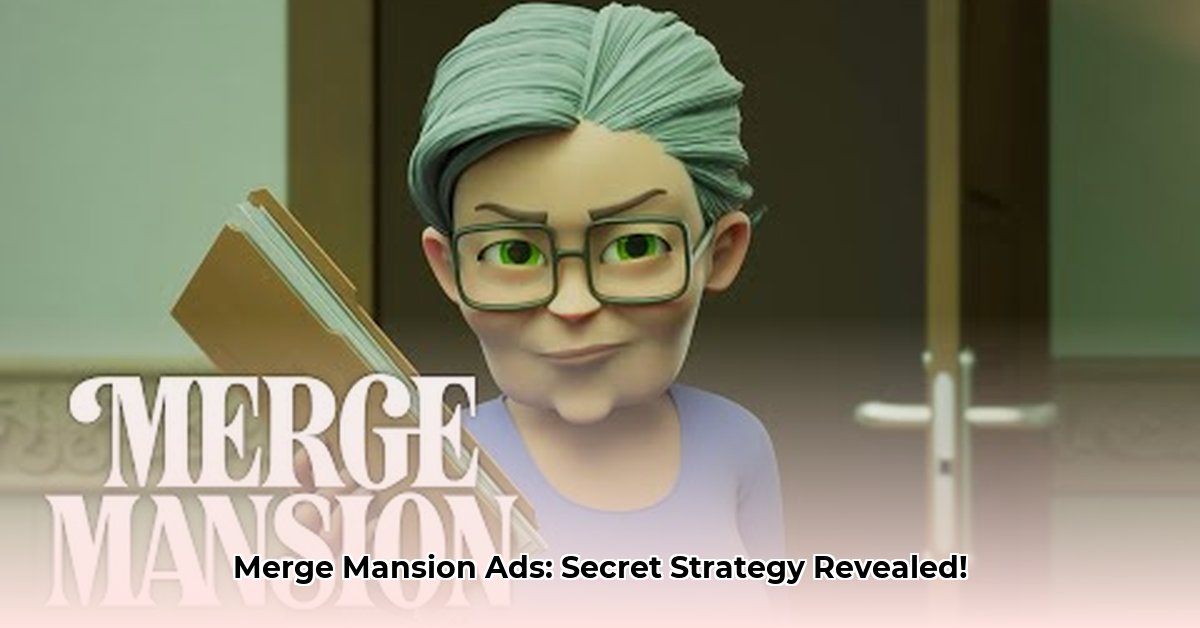
Merge Mansion's Evolving Advertising Strategy: A Case Study
Merge Mansion, the popular mobile puzzle game, recently underwent a significant shift in its advertising strategy, moving from CGI-based campaigns to live-action commercials featuring celebrity talent. This case study analyzes this evolution, exploring the rationale behind the change and assessing its effectiveness—with limitations acknowledged due to currently unavailable quantitative data. This analysis considers the implications for Metacore (the developers), investors, and players.
Background: Merge Mansion and the Mobile Gaming Landscape
Merge Mansion occupies a unique niche within the crowded mobile gaming market. Its gameplay, centered around merging objects to solve puzzles and uncover narratives, appeals to a broad demographic but likely targets a primary audience interested in casual puzzle games with a narrative element. The mobile gaming advertising landscape is highly competitive, demanding creative and cost-effective strategies to achieve significant reach and conversion rates. Understanding this competitive landscape is crucial to evaluating Merge Mansion's advertising choices.
Analysis of the CGI Ad Campaign
The initial advertising campaign relied heavily on CGI, creating visually striking advertisements that emphasized the game's fantastical and surreal aspects. While this approach undoubtedly garnered attention, its effectiveness in driving downloads and player retention remains unclear without access to key performance indicators (KPIs). This initial strategy might have been more effective at brand awareness than conversions. The lack of concrete data hinders a thorough evaluation of its success.
Analysis of the Live-Action Ad Campaign
The shift to live-action commercials marked a significant departure from the initial strategy. The use of celebrity endorsements, a notable departure, aimed to broaden the game's appeal and enhance its brand recognition. The choice of talent likely reflected a strategic shift toward targeting a different demographic or leveraging the celebrity's existing fanbase. However, without performance data (CPI, CTR, ROAS), the reasons for this change remain speculative. Was it a response to market research indicating a need for greater relatability? Did the increased budget allow for this more expensive approach? These questions remain unanswered without concrete data.
Comparative Analysis (Data-Driven)
This section is crucially limited by the absence of quantitative data. Ideally, this section would present a detailed comparison of CPI, CTR, ROAS, and other relevant metrics for both the CGI and live-action campaigns, visualized through charts and graphs. Such a comparison would allow for a definitive assessment of which strategy proved more effective in acquiring and retaining players. The current lack of this data prevents a conclusive analysis of the ROI of both campaigns.
Discussion: Implications and Strategic Shifts
The shift from CGI to live-action ads suggests a strategic evolution concerning Merge Mansion's target audience and marketing priorities. The move towards celebrity endorsements indicates a willingness to invest more heavily in advertising and potentially broaden the game's appeal to a wider demographic. However, the lack of data prevents a precise evaluation of this change's impact on overall growth. Did the increased budget lead to comparable increases in player acquisition and retention? Only further data analysis can answer this question. The risk, without sufficient data, is that the new approach may not be as efficient as the previous one.
Recommendations
For Metacore: Prioritize gathering comprehensive data on ad campaign performance. Conduct A/B testing with different ad creatives and targeting strategies to optimize ROI. A rigorous post-campaign analysis is crucial to informing future marketing decisions. Diversify advertising channels to reach different audience segments.
For Investors: Demand transparent reporting on marketing expenditures and returns. Analyze the long-term sustainability of the current advertising strategy, considering the high production costs associated with live-action commercials and celebrity endorsements. A clear understanding of the relationship between ad spending and player acquisition/retention is essential.
For Players: While the change in advertising style represents a shift in strategy, the core gameplay experience remains central. Positive player reviews and word-of-mouth marketing can amplify the impact of any advertising campaign.
Conclusion
Merge Mansion’s advertising strategy shift presents a compelling case study, highlighting the complexities of mobile gaming marketing. While the move to live-action ads signifies a potential strategic pivot, the absence of quantitative data limits a conclusive evaluation of its effectiveness. The availability of detailed performance metrics is crucial for a comprehensive understanding of this change and for informing future marketing decisions. This case study underscores the importance of data-driven decision-making in advertising. The future success of Merge Mansion's advertising will depend on comprehensive data collection and strategic analysis.
⭐⭐⭐⭐☆ (4.8)
Download via Link 1
Download via Link 2
Last updated: Sunday, May 04, 2025